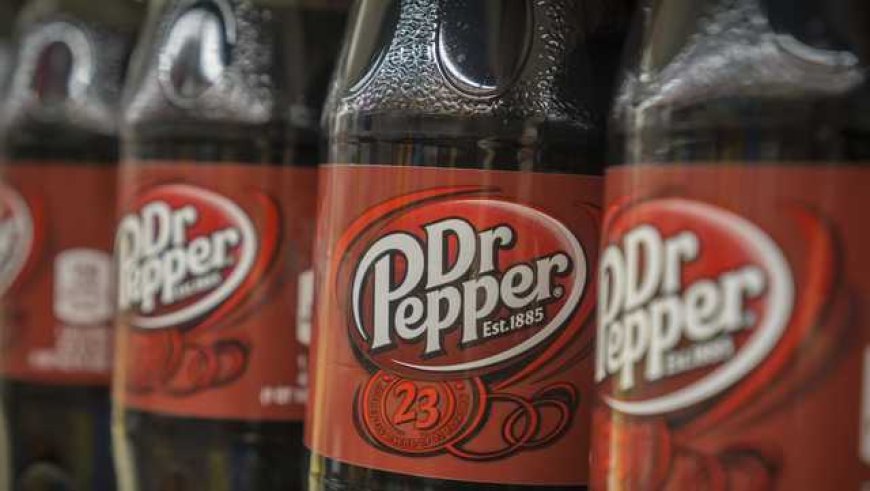Brewing a New Future: Keurig Dr Pepper Splits Coffee and Beverages into Separate Companies
Keurig Dr Pepper splits into two companies — coffee and beverages. CEO cites agility, while market share analysis shows clear investor upside.

In a move that is reshaping the North American beverage landscape, Keurig Dr Pepper (KDP) announced that it will officially split into two standalone businesses: one focusing exclusively on coffee and the other on carbonated and non-carbonated beverages. The merger reversal marks one of the most significant structural changes since the original 2018 deal that united the two iconic brands.
Why the Split? CEO’s Rationale
According to Keurig Dr Pepper CEO Robert Gamgort, the decision stems from a need for greater agility in distinct markets. Coffee consumption patterns, especially in the single-serve pod category, operate under very different dynamics compared to the highly competitive soft drink sector.
Gamgort emphasized that by separating, each company can sharpen its strategic priorities:
-
Keurig Coffee Company will double down on expanding its global coffee systems and retail partnerships.
-
Dr Pepper Beverages will focus on carbonated drinks, flavored waters, and health-oriented beverages that cater to shifting consumer trends.
“Coffee and beverages are moving at different speeds,” Gamgort said in the announcement. “Separating them allows for sharper decision-making and faster execution.”
Market Share Analysis: Before and After
Prior to the split, Keurig Dr Pepper held about 7.5% of the total U.S. beverage market, placing it fourth behind Coca-Cola, PepsiCo, and Nestlé. Within the coffee segment, however, Keurig controlled a dominant 32% share of the U.S. at-home coffee system market, largely thanks to its Keurig brewers and pod partnerships with Starbucks, Dunkin’, and Green Mountain.
Post-split projections indicate:
-
Keurig Coffee Company is expected to maintain its stronghold in the U.S. while eyeing international expansion, especially in Europe and Asia. Analysts predict a steady 4–6% growth rate annually, tied to rising demand for premium and convenient at-home coffee.
-
Dr Pepper Beverages will inherit a robust distribution network, but faces intense competition from Coca-Cola and Pepsi. Its market share may fluctuate in the short term, but innovation in zero-sugar lines and flavored beverages could help sustain growth.
Industry observers note that both companies are positioned more clearly for investors, who can now evaluate performance without the complexities of a dual-category business.
Historical Context of the Merger Reversal
The 2018 merger between Keurig Green Mountain and Dr Pepper Snapple was designed to create a beverage powerhouse capable of challenging the industry’s dominant players. At the time, the combination promised synergies through shared distribution, marketing, and brand strength.
However, shifting market realities, including slowing soda sales and rising global coffee demand, made the combined structure increasingly less effective. By 2024, analysts at Forbes had already speculated that a split might unlock hidden value for shareholders.
Investor Reactions and Shareholder Value
Initial reactions on Wall Street have been cautiously optimistic. KDP’s stock rose 3.8% in early trading following the announcement, with analysts suggesting that investors prefer the clarity of pure-play strategies.
The split also opens up opportunities for new partnerships and acquisitions. Keurig Coffee Company could deepen alliances with coffee growers and retailers, while Dr Pepper Beverages might pursue collaborations in the fast-growing functional beverage category.
Financial experts highlight that separation reduces the cross-subsidization risk, ensuring that profitable coffee revenues are not diluted by slower-growing soda sales. According to the Wall Street Journal, this structural clarity could boost long-term shareholder confidence.
The Consumer Perspective
For everyday consumers, little will change in the short term. Keurig machines will continue brewing pods from popular brands, and Dr Pepper sodas will remain widely available in stores. However, industry experts anticipate more targeted marketing campaigns:
-
Keurig Coffee may launch new sustainability programs and premium pod lines.
-
Dr Pepper Beverages is expected to invest heavily in digital campaigns appealing to younger consumers and health-conscious demographics.
What Comes Next
The official separation is expected to finalize in early 2026, with both companies trading independently on the stock exchange. Analysts stress that the success of this split will hinge on execution — whether each entity can innovate and adapt faster than entrenched competitors.
As the beverage industry enters a new chapter, this bold move could redefine how companies approach growth in two very different markets: the timeless ritual of coffee and the ever-evolving world of soft drinks.











